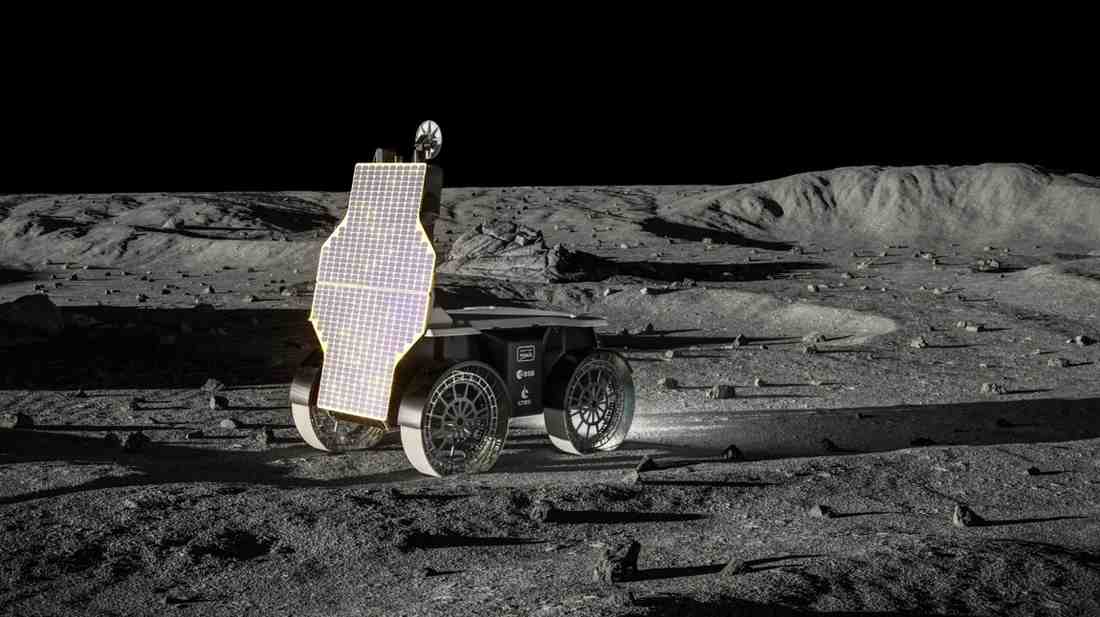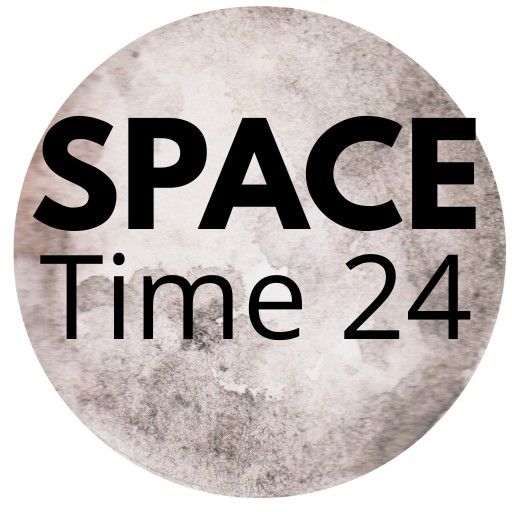Venturi Space has unveiled the Mona Lena lunar rover—a lightweight, all-European lunar vehicle designed for Moon missions in collaboration with Astrolab, aiming to support ESA and national agencies.

Venturi Space Reveals Mona Lena Lunar Rover in Collaboration with Astrolab
Paris, June 2025 — European innovation in lunar mobility has taken a major leap forward. Venturi Space, a Monaco-based engineering company known for developing high-performance mobility systems, has officially unveiled the Mona Lena rover—a compact, all-European lunar rover built in partnership with U.S.-based planetary robotics firm Astrolab.
The new rover, internally designated as FLIP (FLEX Lunar Innovation Platform), is specifically designed to support upcoming Moon missions, particularly those led by the European Space Agency (ESA) and individual European countries engaged in lunar exploration programs.
A Lightweight Rover for a Heavy-Duty Mission
The Mona Lena rover weighs approximately 500 kilograms and is capable of carrying payloads of up to 50 kilograms. Its small footprint makes it ideal for missions that do not require large landers, while still offering robust scientific and logistical capabilities. The rover is designed to be compatible with medium-class lunar landers, enabling easier integration into commercial and government-backed lunar missions.
Key Features:
-
- Compact design for small payload delivery
-
- Cryogenic and thermal shielding for harsh lunar conditions
-
- Autonomous navigation systems
-
- Modular architecture for customizable mission needs
European Built, Globally Supported
Although the rover is a collaborative effort, the Mona Lena lunar rover is unique in that its core development and design are being carried out across Venturi’s facilities in Monaco, France, and Switzerland. This makes it one of the first truly European lunar rovers being actively considered for surface missions.
The technical components—including wheels, drive systems, and energy storage—are engineered to withstand extreme temperatures ranging from −180°C to +120°C, and to survive extended lunar nights, which can last up to 15 Earth days.
Shared Heritage with Astrolab’s FLEX Rover
Venturi’s Mona Lena rover borrows heavily from Astrolab’s larger FLEX rover design, a vehicle selected as a candidate for NASA’s Artemis program. The FLIP version, however, is smaller and focused on early technology demonstration, scientific instrumentation delivery, and logistics support.
Shared Systems:
-
- Actuators and mobility platform
-
- Avionics and autonomous driving software
-
- Modular payload bay
-
- Solar energy systems
This shared technological foundation accelerates development while keeping the cost and weight suitable for smaller-scale lunar missions.
- Solar energy systems
Aiming for the Moon: Mission Timeline and Vision
Venturi Space and Astrolab are preparing Mona Lena for a potential lunar flight as early as late 2025 or early 2026. The rover is being evaluated for inclusion in upcoming ESA and commercial lunar missions, especially those targeting the lunar South Pole, a region of growing scientific and strategic interest.
The companies envision Mona Lena lunar rover as part of a future lunar logistics network—carrying tools, instruments, and supplies to various exploration sites across the Moon’s surface. The rover may also serve as a precursor for future European robotic fleets, supporting everything from remote science missions to infrastructure deployment for crewed lunar bases.
A Symbol of European Capability in Space Mobility
The Mona Lena lunar rover reflects Europe’s growing ambition to play a leading role in the Moon economy. It shows that high-performance, mission-ready lunar technology can be developed within European borders, offering a strong alternative to American and Asian rover platforms.
Venturi and Astrolab’s approach is not just about technology—it’s about enabling new mission architectures where small, flexible vehicles work alongside larger rovers, landers, and orbiters to build the infrastructure needed for permanent lunar exploration.
News Source:-
https://x.com/Venturi/status/1934596825928908877?t=cNXrE3oFFuQg3k3IsVqjOg&s=19
FAQs About the Mona Lena Lunar Rover
Q1. What is the Mona Lena lunar rover?
The Mona Lena is a lightweight lunar rover developed by Venturi Space in collaboration with U.S.-based robotics company Astrolab. Internally known as FLIP (FLEX Lunar Innovation Platform), the rover is designed to deliver small payloads on the Moon and support early scientific and infrastructure missions.
Q2. Who is building the Mona Lena lunar rover?
The Mona Lena rover is being developed by Venturi Space, a European company headquartered in Monaco, with support from Astrolab, an American firm known for the larger FLEX lunar rover. The Mona Lena is considered an all-European vehicle in its design, assembly, and materials.
Q3. What is the weight and payload capacity of the Mona Lena lunar rover?
The rover weighs approximately 500 kilograms and can carry payloads ranging from 30 to 50 kilograms, depending on mission needs. It’s optimized for compact lunar landers and short-duration surface missions.
Q4. What is the purpose of the Mona Lena lunar rover?
Mona Lena is intended to support small payload delivery to the Moon. It can be used to transport scientific instruments, technology demonstrators, or small tools to specific areas of interest, especially in the lunar South Pole region. It also serves as a test platform for technologies planned for larger rovers.
Q5. What technology does it share with Astrolab’s FLEX rover?
Although smaller, the Mona Lena shares key components with the FLEX rover, including:
- Drive and suspension systems
- Avionics and control software
- Modular design architecture
- Solar energy and thermal control units
This shared technology allows faster development and flight-readiness.
Q6. What kind of lunar missions is Mona Lena suitable for?
The rover is ideal for:
- Short-range scientific exploration
- Payload delivery for lunar landers
- Technology validation in extreme environments
Precursor missions to support future infrastructure
It is especially suitable for missions that don’t need heavy logistics support.
Q7. When is Mona Lena expected to fly to the Moon?
Venturi Space is aiming to launch the Mona Lena rover as early as late 2025 or 2026, depending on mission availability and lander integration. The launch will most likely be through a commercial lunar lander provider under ESA or international partnerships.
Q8. Why is the Mona Lena lunar rover significant for Europe?
Mona Lena marks one of the first truly all-European lunar mobility platforms designed for active deployment. It reflects Europe’s growing commitment to lunar exploration and its intent to be self-reliant in surface technology for future Moon missions.
You May Also Like This
